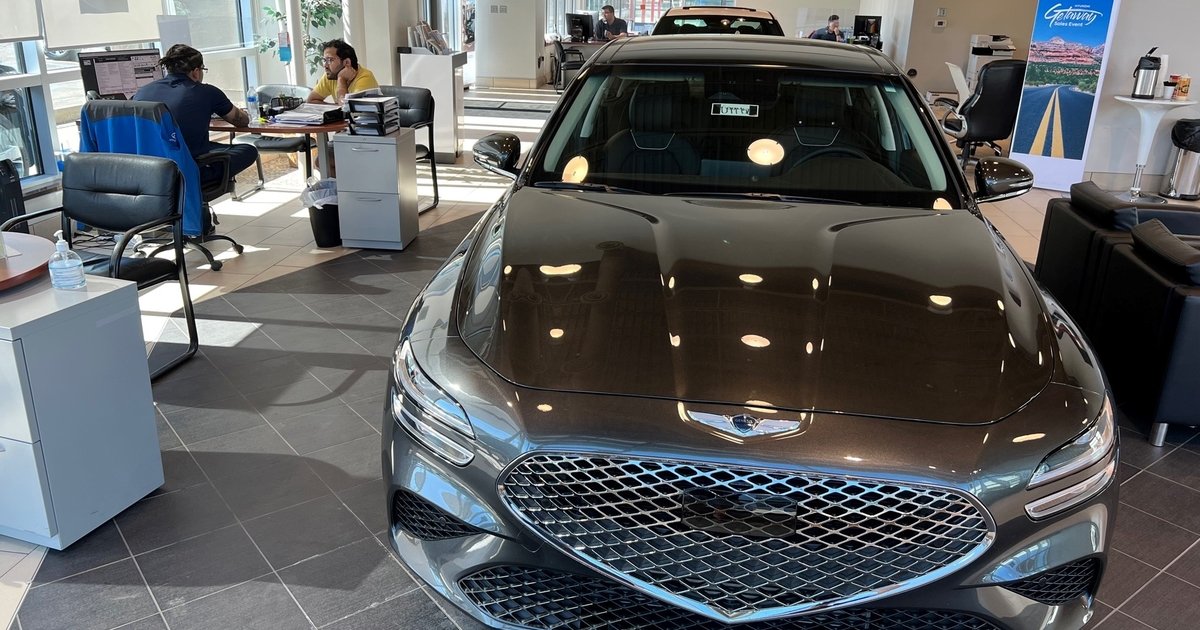
U.S. sales at Kia and Genesis rose in September as the auto industry’s inventory woes continued to ease, though growing economic challenges threaten what was supposed to be a more robust second-half rebound as the industry enters the fourth quarter.
Volume last month rose 6.4 percent to 56,270 at Kia, setting a September record for the automaker. It was the company’s second consecutive monthly gain year over year. The automaker continues to benefit from an expanded crossover linup and new electric vehicles.
“Building upon record September and third-quarter sales, we’re optimistic that Kia will see a strong fourth quarter as well,” Eric Watson, vice president of sales operations at Kia America, said in a statement.
Genesis on Saturday reported September sales of 4,907, a gain of 0.8 percent over 4,867 deliveries a year earlier. Hyundai Group’s upstart luxury brand has now posted year-over-year sales growth 22 straight months, with year-to-date deliveries up 19 percent. But after rising by double-digits in the first six months of the year, Genesis’ sales growth has slowed considerably in recent months, in another sign the market is losing some momentum.
Toyota Motor Corp., Honda Motor Co., Hyundai, Subaru and Mazda will report September results on Monday.
General Motors, Stellantis, Nissan Motor Corp., Volkswagen Group and BMW Group will release third-quarter sales Monday. September sales from Ford Motor and Volvo will be reported Tuesday.
While deliveries are forecast to rise year over year, the market is expected to remain depressed in September on lean inventories. Monthly sales have been stuck at around 1.1 million since August 2021 as automakers grapple with supply chain problems, notably a shortage of microchips.
The second-half rebound that automakers and analysts predicted early in the year is now threatened by major economic headwinds.
Consumer sentiment has turned sour again amid persistent inflation, rising interest rates and borrowing costs, and depressed equity markets. Gasoline prices, after weeks of steady decline, are on the rise again. And the housing market, which also helps drive new-vehicle sales, notably fleet volume, has cooled considerably.
Analysts have been forced to cut their outlook for 2022 U.S. light-vehicle sales, with some now below 14 million.
The seasonally adjusted sales pace is expected to remain well under 15 million in September, with analysts’ estimates ranging from 13.3 million to 13.6 million, up from 12.38 million in September 2021, the lowest pace of sales since the early months of the COVID-19 pandemic.
September was on track to be the 16th consecutive month that retail inventory closed below 1 million vehicles, LMC Automotive and J.D. Power said. Cox Automotive says inventory continues to improve, though slowly — rising 41 percent, or by 350,000 vehicles — last month over September 2021. Kia, Toyota, Subaru, Honda, Lexus, Hyundai, Acura, BMW, Porsche, Land Rover, Mini and Mazda had the leanest supplies last month, Cox Automotive says, while Volvo, Ram, Dodge, Jeep, Lincoln, Jaguar, Audi, Buick, Chrysler and Cadillac had the highest stockpiles.
With inventories lean and retail demand still strong, discounts remain low.
The average incentive spending per new-vehicle last month was on track to fall to $936 from $1,792 in September 2021, LMC Automotive and J.D. Power said, with spending as a percentage of the average sticker price on pace to drop to 2 percent, down 2 percentage points from September 2021. September also marked the fifth consecutive month new-vehicle incentives averaged under $1,000. TrueCar estimates average discounts dropped 54 percent to $1,090 last month vs. $2,347 in September 2021.
The average new-vehicle retail transaction price in September was expected to reach $45,622, a 6.3 percent increase from September 2021, J.D. Power and LMC said. The previous high for any month — $46,173 — was set in July.
- There were 25 selling days last month, the same as in September 2021.
- After breaching the $700 level for the first time ever in July, the average monthly finance payment in September was on pace to be $711, up $56 from September 2021, J.D. Power and LMC said. That translates to an 8.5 percent increase in monthly payments from a year earlier, which is above the 6.3 percent increase in transaction prices.
- The average interest rate for new-vehicle loans was expected to increase by 1.69 percentage points from a year earlier to 5.71 percent last month, LMC and J.D. Power said.
- Fleet deliveries were expected to total 161,300 last month, up 75 percent from September 2021 on a selling-day adjusted basis, and fleet volume was expected to account for 14 percent of total light-vehicle sales, up from 9 percent a year earlier, J.D. Power and LMC said.
“With increasing interest rates, affordability is being tested. We’re seeing consumers faced with the reality that to afford the same vehicle at the same monthly payment as last year, they are forced to increase their down payment, which is creating new affordability challenges. We are paying close attention to how the industry will react to these concerns. Perhaps there will be more incentives, longer finance terms, or a combination of these.”
— Zack Krelle, TrueCar analyst